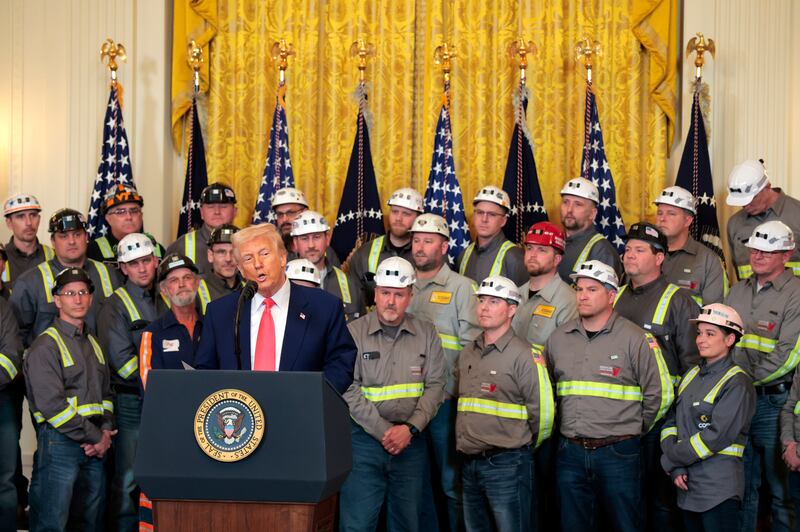Donald Trump has always divided the world into friends and enemies. In the first category are those who support him, praise him, and pledge their loyalty; in the second category is pretty much everyone else. When it comes time to distribute the spoils, his friends are rewarded and his enemies punished.
At least, that is, the friends that matter. One group of incredibly loyal Trump supporters has, however, been shown the back of his hand, especially in the first 100 days of his second term: rural voters.
Americans who live in areas of low population density far from metropolitan centers are not homogeneous (a quarter of them are non-white), but have been collectively at the core of Trump’s base since 2016.
That Trump is so adored in rural America is one of the most remarkable facts about his political career. After all, rural voters are supposed to be keenly attuned to cultural affinity; before they’ll vote for a candidate, we’ve been told so often, they have to know that he—and it’s almost always going to be a “he”—understands their lives, their communities and their values. It wouldn’t hurt if he put on some overalls and helped out with some farm chores, or chatted about commodity prices and crop yields down at the grain elevator.

Yet this son of New York City, born into wealth and privilege, who spends hours on his hair and wouldn’t know which end of a cow to milk, probably gets more loyalty among rural voters (at least white rural voters) than any politician in American history.
According to the Pew Research Center, Trump got 62 percent of the rural white vote in 2016 and 71 percent in 2020. (While we’re awaiting comprehensive data from the 2024 election, it appears that Trump did at least as well, if not a bit better, in these parts of the country than he did four years before.)
And how has Trump repaid that support? Is he lavishing benefits on rural folk to show them how appreciative he is of their steadfast loyalty? Quite the opposite. Not only has he done nothing to materially improve the lives of rural people, his policies—especially the attacks on government that he and Elon Musk have unleashed—are falling particularly hard on rural Americans.
The number of vital programs that have been cut, crippled or outright eliminated is almost too large to list. He dismantled the U.S. Agency for International Development, which used to buy billions of dollars worth of food from American farmers, while his trade wars have already led to predictable retaliation in the form of China stopping purchases of American agricultural goods.
He gutted the Agriculture Department’s Rural Development office, threatening projects that offer support to rural communities around the country, closed offices at the Environmental Protection Agency that work to prevent pollution in rural areas, and is cancelling research grants to scientists studying the effects of that pollution on rural children. The brutal cuts to Medicaid that Republicans are contemplating to pay for his tax cuts will be devastating for rural hospitals, nearly 200 of which have closed or drastically reduced services in the last two decades. He’s planning a broadband heist that would deprive rural residents of high-speed fiber internet, instead giving Musk billions to provide the overpriced and mediocre Starlink service.
And many rural communities rely on immigrant labor—both documented and not—to sustain farms and food processing plants, work many native-born Americans avoid; Trump’s crackdown on immigration could leave many with worker shortages and missing the economic sustenance those immigrants provide.
When he has bothered to talk to rural people, Trump has long offered the same empty platitudes and patter. Earlier this month he brought a bunch of miners to the White House to make the same empty promise he did in 2016, that he’d bring back lost jobs and restore the communities of coal country. (To be clear, his grand plan to scale back some coal plant regulations likely won’t have much impact.)

There are fewer coal jobs today than there were when he took office in 2017, and there will probably be fewer still when he leaves in four years, given the forces of automation and competition from cheaper natural gas and renewables.
But when my co-author Tom Schaller and I traveled to rural communities around the country reporting our book White Rural Rage, people told us the same things again and again about Trump: “He gets us.” “He speaks our language.”
Trump may not know much about rural people, but he understands their darkest feelings: their resentment, their hatred, and their anger. In many rural places that have seen population loss, a lack of economic opportunity and the ravages of the opioid crisis, those feelings are raw. Trump realized that as long as he keeps picking at those scabs and laying blame for the scars they leave elsewhere—liberals, urbanites, ‘woke’ professors and protestors, racial minorities—he’ll keep winning rural support even if he doesn’t lift a finger to solve rural problems. In fact, solving those problems might blunt the anger that feeds Trump’s movement.
So, then, the assault he has brought to rural America in these first 100 days is a new order of magnitude. Will it break through, finally convincing the people who have long backed him so fervently that he was never on their side in the first place? Don’t bet on it. When Trump takes away the government programs they rely on, it’ll be “Washington’s” fault, not his. When his tariffs tank the economy, it’ll be Wall Street “elites” or somebody else.
One thing they won’t do is put the responsibility on the leader in whom they put their faith. That would mean admitting that they’d been played for fools.
The post Opinion: Trump’s Second Term Is Already Devastating Many of His Most Loyal Supporters appeared first on The Daily Beast.




